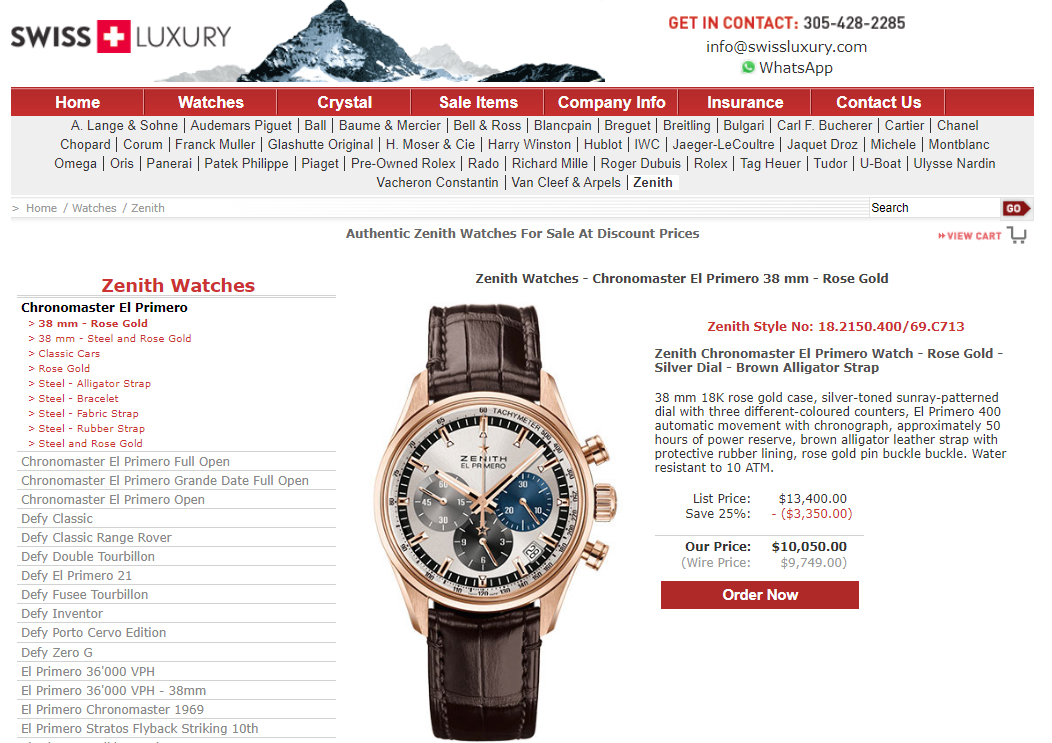Few authorized dealers of luxury watches will shed a tear if Florida-based SwissLuxury.com doesn’t make it through the current Coronavirus crisis, and nor will the US-based brand offices and wholesalers.
“We used to get lawsuits all the time by these guys,” says Swiss Luxury founder Darryl Randall. “We have been called everything from dark gray to black,” he adds when WatchPro asks whether the grey market tag for the business fits.
Swiss Luxury trades in brand new watches sourced from a network of wholesalers and dealers around the world.
The company doesn’t tie up cash in holding its own inventory, nor would it describe itself as a consignment or listing business where other dealers and individual traders can advertise their watches as you see with Amazon’s Marketplace or Chrono24.
There is a small part of the business buying and selling older watches, but the business model is to advertise brand new watches with box and papers that Mr Randall is confident he can procure from his global network of dealers and distributors — finding a customer first and then sourcing the watch. Those suppliers give up a little margin to Swiss Luxury, but in return they secure a sale to an American client that would be outside their territory.
Mr Randall concedes his is a low margin operation, but with sales hovering between $6 million and $10 million over recent years, and a staff of just himself and a bit of family help, he thinks he is in a decent position to ride out a prolonged downturn.
The grey market is a perfect bellwether for the wider health of the luxury watch market. In 2019, Swiss Luxury found it tough to procure the most desirable watches — supply of the steel sports models from Rolex, Patek and AP was near impossible. “If you had a Batman or a Hulk, you were not minded to sell it because the price might be higher if you hold it,” Mr Randall recalls.
Despite that shortage, the company had its best ever year, thanks mainly to the broad cross section of brands that were selling at below retail prices.
It is a pure grey market operation, a part of the market that some watch industry analysts will thrive this year as brands push more product into the market than can be sold through authorised dealers.
There is no sign of that yet, according to Mr Randall, since production has all but ceased and so has distribution.
What product is in the market is not moving, partly because people do not know which direction prices will move in the future.
“Nothing is moving. Buying and selling has dropped by 90%,” he concludes.
Looking forward, he expects the damage of the healthcare crisis to irreversibly change the landscape for the watch business world-wide. “I think you are going to see the major groups like Watches of Switzerland, which have access to the capital they need to ride this out, find opportunities to acquire retailers that do not have the resources to make it through,” Mr Randall suggests.

